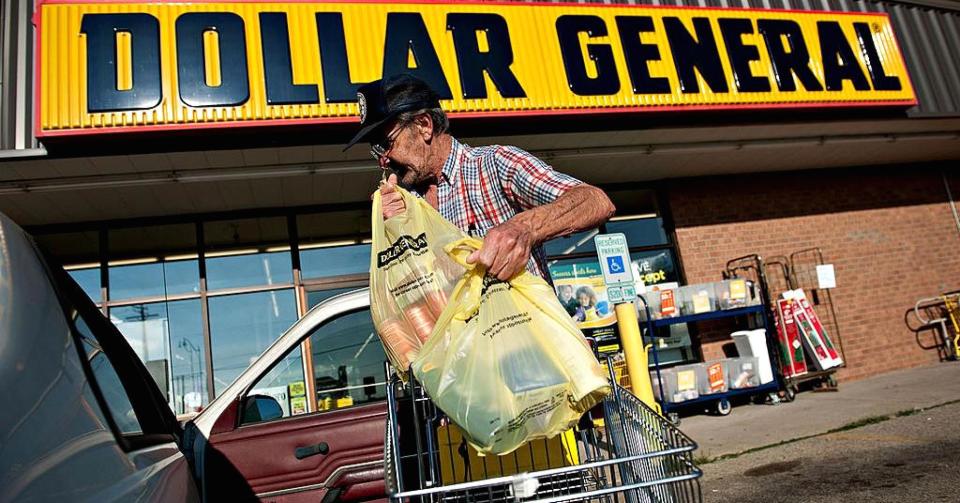Amazon is going after dollar stores

While premium retailers close stores citing the headwind of e-commerce (a.k.a Amazon), dollar stores like Dollar Tree (DLTR) and Dollar General (DG) have been largely unaffected.
And Amazon (AMZN) sees an opportunity in it. Last week, the e-commerce giant rolled out a $10 & Under feature on its website and app, where customers can buy items at bargain prices. Shoppers will also get free shipping and they don’t even need a Prime membership.
“Amazon’s $10 & Under is designed to meet the needs of consumers looking for everyday low-cost items as well as small gift items,” said Brittain Ladd, a retail consultant, who sees it as an extension of Amazon’s retail ecosystem which duplicates the Dollar Store treasure hunt experience online.
Amazon eyes customers who are not Prime members

Amazon’s $10 & Under is a way for the company to tap into shoppers who don’t want to become Prime members and low-income customers. A recent Piper Jaffray survey revealed that 82% of U.S. households with over $112,000 in income are Prime members, while the percentage of households that earn less than $41,000 per year is 52%. Amazon rolled out $10 & Under after a Morgan Stanley report suggested Prime membership growth slowed last year.
This is not Amazon’s first attempt to lure low-income shoppers. Last June, the e-commerce giant reduced its monthly Prime membership fee to $5.99 for people with food stamps. When it raised the Prime fee to $12.99 per month in January, the discount rate for low-income families remained intact.
Amazon is entering a field with some established players, which have been doing well. Wish, a shopping app which directly ships items from Chinese suppliers to U.S customers, topped America’s most downloaded shopping app list in 2017, according to App Annie, an app market data provider. Wish provides a wide selection of accessories, clothing and home goods priced under $10.
David Yeom, the CEO of Hollar, a discount online retailer with items that are mostly $1 to $5 don’t see Amazon’s new feature as a threat. “We look at it as a validation of what we’re doing,” said Yeom. Ninety percent of Hollar users are female, and the majority are moms in middle America. “It’s truly affordable for everyone. That’s the magic of dollar store impulse purchases,” he said.
Can selling dollar items online be profitable?
Consumers may have interest in the online treasure hunt, but some analysts aren’t optimistic about the profitability of the model. The cost of fulfilling orders with smaller ticket items could be high. And the cost of shipping will sometimes exceed the price of items or just take too long. For instance, a package from Wish sometimes takes a few weeks to arrive and it’s not uncommon to see customers complain about the quality of the product.
“With an average ticket price of $10, you can’t profitably ship products. Either you charge for shipping, then no one will buy it. Or you eat the shipping charges. There is no way you’re gonna make money,” said Loop Capital Markets analyst Anthony Chukumba, who doesn’t think Amazon will be a major threat to dollar stores, at least for now.
Hollar, which claims to be the first online dollar store, provides free shipping on orders above $25. Yeom says the company reduces costs by scale. For example, they aggregate orders for shipping and hold inventories of popular products.
For Amazon, which has been building its own logistics empire, mastering the economics of scale may be easier. “Amazon has built over 100 distribution centers so when they ship products, they select to fulfill the order from the fulfillment center that is closest to the customer,” said Ladd. “Even if Amazon is shipping an item worth only $5, Amazon can ship the product cost-effectively because the package doesn’t have to travel very far.”
Krystal Hu covers e-commerce for Yahoo Finance. Follow her on Twitter.
Read more:
How young consumers fueled Alibaba’s 90% in mobile Singles Day sales
Think you’re buying on Amazon? It’s actually from Alibaba
How Amazon is eclipsing Walmart’s best efforts to dominate e-commerce

